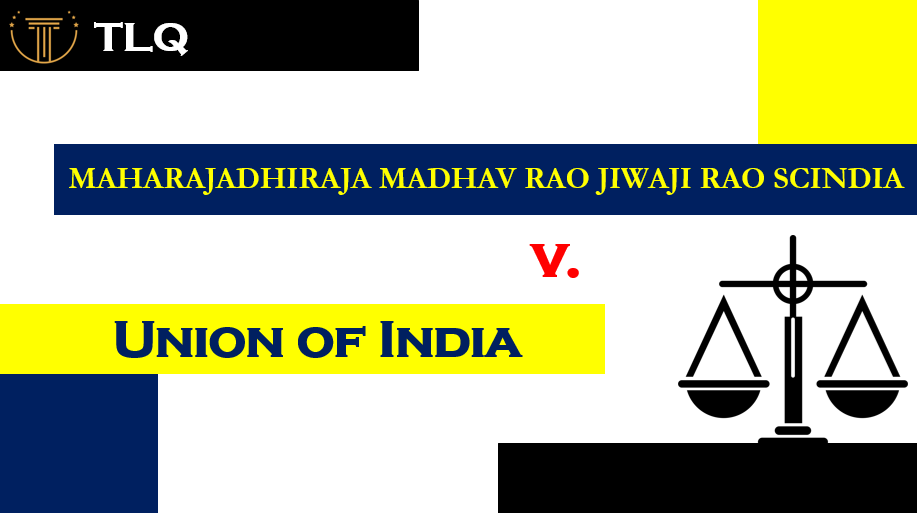Published On: 21st January, 2024
INTRODUCTION
This is a case that addresses the terrible practice of sexually harassing a woman at work. Women and children are among the most vulnerable groups in a society like ours, thus it is crucial to protect their rights. A society’s ability to flourish is frequently gauged by how well it treats these groups. Women are particularly vulnerable to the phenomena of sexual harassment of women, both in and out of the workplace. The term “workplace” refers to “any place visited by the employee arising out of or during the course of employment, including transportation provided by the employer for undertaking such a journey.” Sexual harassment is defined as unwelcome sexually determined behavior, either directly or indirectly, which includes physical contact, demand/request for sexually based favors, showing pornography, any sexually colored remarks, or other unwelcome physical verbal/nonverbal sexual conduct. Vishaka v State of Rajasthan is a landmark judgment issued by the Supreme Court of India that addresses aspects of sexual harassment of women in the workplace. The Supreme Court created the well-known Vishaka guidelines and made them mandatory for both the private and public sectors.
BACKGROUND
Prior to 1997, there were no official regulations in India governing how an employer should respond to a sexual harassment event that occurred at work. Section 354 of the Indian Penal Code, which addresses criminal assault of women to outrage women’s modesty”, and Section 509, which penalizes an individual or individuals for using a “word, gesture or act intended to insult the modesty of a woman”, require women who are subjected to sexual harassment at work to file a complaint. These sections delegated to the police officer the authority to interpret what constitutes “outraging women’s modesty”.
Indian social worker Bhanwari Devi hails from Bhateri, Rajasthan. The Vishaka case is named after a non – governmental organization called Vishaka. The NGO works for women’s rights in Rajasthan. Bhanwari Devi was a community worker who supported the advancement and empowerment of women. She used to advocate for campaigns against underage marriages and the dowry system. She prevented a child marriage in a Gujjar family, and as a result, she was gang–raped in 1992 by powerful people in a remote Rajasthani community. The local court found the accused not guilty owing to a lack of evidence. Bhanwari Devi and other parties used the Vishaka platform to file a writ petition with the Indian Supreme Court. The Public Interest Litigation (PIL) that was launched aimed to address the problem of women being sexually harassed at work. The Rajasthan High Court denied the rape victim justice, and the perpetrators were spared. This gave rise to several women’s groups and non – non-governmental organizations submitting a Supreme Court Petition under the Vishaka platform. Due to the lack of domestic legislation in this area, the Supreme Court of India was made aware of the need to develop comprehensive measures to prevent the evil of sexual harassment of working women in all workplaces.
FACTS
The facts of the case are:
- Bhanwari Devi worked as a social worker and activist in a village in Rajasthan.
- She was an employee under the State Government of Rajasthan under a social development program that was established at the rural level with the goal of ending child marriage in villages along with the dowry system.
- The daughter of Ramkaran Gujjars, who was only a baby, was about to get married, and Bhanwari Devi tried to prevent it.
- Despite her fruitless efforts to break the marriage off, Bhanwari Devi was not absolved or forgiven for her act of misconduct.
- She was made aware of and threatened with social separation from society or boycott.
- In front of her husband, Ramkaran Gujjar and his five companions gang–raped her in September, 192.
- Her age was confirmed by the male physician at the usual main health center, but no suggestion that she had been sexually assaulted was made in her medical report by the physician in Jaipur.
- She was also subjected to constant harassment at the police station throughout the entire nighttime by other women.
- The policeman asked her to return to her village and leave her lehnga as proof of the occurrence after midnight.
- After that, all she had to wrap her body in was her husband’s bloodstained dhoti, which meant they had to spend the entire night in the police station.
- The defendants were released by the Trial Court on the grounds that they were not guilty.
- In its ruling, the High Court stated that the case involved gang rape carried out as a form of revenge.
- A PIL was filed in the Supreme Court of India by women and non – non-governmental organizations in response to this incident and the rulings.
ANALYSIS
The primary concern in the case was India’s lack of particular laws and regulations pertaining to sexual harassment in the workplace. In the ruling, the Supreme Court acknowledged that sexual harassment in the workplace infringed against a woman’s fundamental rights under the Indian Constitution, including Article 14 (right to equality) and Article 21 (right to life and dignity). The Vishaka guidelines were created by the Court to address and prevent sexual harassment in the workplace. Until legislation was passed, these rules, which were based on international treaties and standards, were legally enforceable. It was made possible by the Vishaka case and its directions that the Sexual Harassment of Women at Workplace (Prevention, Prohibition, and Redressal) Act, 2013 was passed in India. This law required the corporate or any other organization to set up internal complaint committees in order to handle claims of sexual harassment at work. In addition to bringing attention to women’s rights and the necessity of a safe workplace, the case changed the nation’s laws and society in a huge way.
CONCLUSION
Even after fifty years of independence, the country of India had no specific laws against sexual harassment, despite many cases of gender discrimination and sexual assault against women prior to the declaration of Vishaka. Despite being ignored for a very long period of time, this judgment highlighted the evil of sexual harassment. Sexual harassment against women violates their basic right to dignity and can lead to a lifetime of suffering from a single act of harassment. Undoubtedly, the Vishaka guidelines and the 2013 legislation are positive steps in the correct direction, but eradicating the workplace culture of sexual harassment will take time and will involve addressing several issues, including the stigma attached to those who experience such atrocities. As of now, we have laws but the only place we lack is in the process of implementation. There are end numbers of unreported cases. We need to change our mindset and we must learn to raise our voices whenever any misconduct happens to us.


